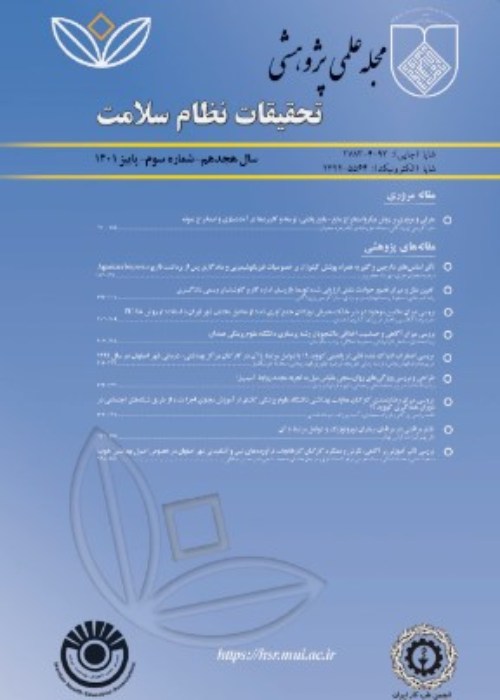Removal of Toluene from the Airflow Using Catalytic Ozonation
Author(s):
Abstract:
Background
The widespread use of toluene and its consequent adverse effects on health and specially its chronic effects on the central nervous system has resulted in many studies being carried out on the methods that can control and reduce toluene vapors in the airflow. The objective of this study is to assess the effectiveness of the catalytic ozonation process in the removal of toluene from the airflow.Method
The present study is of the experimental type and was carried out on a laboratory scale. The experimental equipment consisted of an air pump, an injection pump, an ozone generator, a humidity generating system, a mixing chamber, a rotameter, and a glass reactor with a length of 25 cm and an internal diameter of 2 cm. Varying concentrations of toluene were constantly exposed to the process of catalytic ozonation to the activated carbon and activated carbon covered in magnesium nitrate while inducing changes in variables such as reaction time, ozone dosage, and level of humidity. Different concentrations of toluene were measured before and after exposure to the treatment process. The data were analyzed using the SPSS Win 16 and such statistical techniques and methods as descriptive and inferential statistics and three-way ANOVA were utilized.Findings
The findings indicated that the toluene removal rates were much higher in the catalytic ozonation process when activated carbon covered in magnesium nitrate was used than when pure activated carbon was used. This issue can be deduced from the fact that the time necessary for toluene to appear at the exit point of the reactor when using activated carbon is 50 hours, while this time in case of use of activated carbon covered in magnesium nitrate is 115 hours. The findings also showed that the three variables of reaction time, ozone dosage, and relative humidity had a positive effect on the process, so that increasing the amounts of these three variables led to an enhancement of the removal system.Conclusion
Given the considerable enhancement of the toluene removal rates as a result of concomitant use of activated carbon and magnesium nitrate in the catalytic ozonation process, it can be concluded that activated carbon covered in magnesium nitrate is an appropriate method in the removal of VOCs from the airflow.Keywords:
Language:
Persian
Published:
Journal of Health System Research, Volume:9 Issue: 12, 2014
Pages:
1346 to 1356
magiran.com/p1272101
دانلود و مطالعه متن این مقاله با یکی از روشهای زیر امکان پذیر است:
اشتراک شخصی
با عضویت و پرداخت آنلاین حق اشتراک یکساله به مبلغ 1,390,000ريال میتوانید 70 عنوان مطلب دانلود کنید!
اشتراک سازمانی
به کتابخانه دانشگاه یا محل کار خود پیشنهاد کنید تا اشتراک سازمانی این پایگاه را برای دسترسی نامحدود همه کاربران به متن مطالب تهیه نمایند!
توجه!
- حق عضویت دریافتی صرف حمایت از نشریات عضو و نگهداری، تکمیل و توسعه مگیران میشود.
- پرداخت حق اشتراک و دانلود مقالات اجازه بازنشر آن در سایر رسانههای چاپی و دیجیتال را به کاربر نمیدهد.
In order to view content subscription is required
Personal subscription
Subscribe magiran.com for 70 € euros via PayPal and download 70 articles during a year.
Organization subscription
Please contact us to subscribe your university or library for unlimited access!



